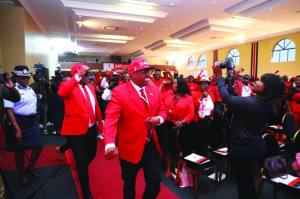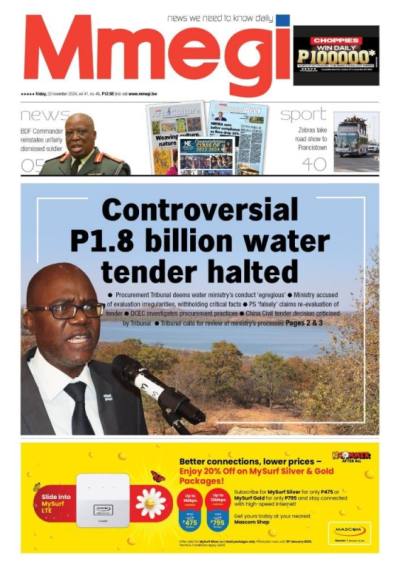In 1868 the Cape Colony (under the British) annexed Basutoland, ostensibly because King Moshoeshoe had made an appeal to the Queen following hostilities with the Boers of the Orange Free State
This was not true. (Morton and Ramsay, 2017) During 1884-1885 European powers met in Berlin to carve out Africa amongst themselves in a most indiscriminate and devastating manner. Families, tribes and ethnic groups were instantly divided and separated by new international boundaries, languages, and customs imposed on them.Decle has noted:
“The expression of European rule over Africa has altogether been in contrast to these methods. It has begun at quite the other end. Instead of drifting into the empire, the European Powers have deliberately carved up Africa and dealt it among themselves. Elsewhere annexation has followed occupation; in Africa, Europeans have first annexed and then proceeded to occupy. The whole proceeding has been deliberate, but for international jealousies, it might even be called unnecessary. No single Power was overwhelmingly anxious to take up the government of huge territories in savage Africa, but each was perfectly ready to do so rather than see the country pass into the hands of a rival. Each Power was in a position to sit down and deliberately decide what it would do with the sphere of influence that has been pegged out for it. Instead of following and being guided by events, each nation had more or less of a blank sheet on which it could inscribe the colonial system more or less according to its own taste and judgement.”
Germany established its presence in Namibia in 1884. This worried the British, as any further German expansion to the east would hinder the growth of British trade. The British indicated their desire to annex Bechuanaland to the Germans during the Berlin Conference (Morton and Ramsay, 2017). Therefore, through an Order-in-Council of January 27, 1885, the British placed the Kalahari south of the 22nd parallel under their control. This was called British Bechuanaland, now North West Province of South Africa. This declaration became public in March 1885 during the Berlin Conference. The declaration of a Protectorate, apart from preserving trade corridors into the African hinterland, was being used by the British to stop the expansion of Germany which was already also present in Tanganyika, as well as Portugal in Angola and Mozambique. (Selolwane) As Mogalakwe notes:
“The Berlin Conference agreed, inter alia, that any European nation that took possession of any part of Africa or named themselves as a ‘protector’ of one, had to inform the other signatories of the Berlin Act of this action and that if this was not done their claim would not be recognised.”
“The establishment of the Chartered Company [British South Africa Company] in south-central Africa resolved the Imperial Government’s problem of what to do about the reputedly rich interior. The amalgamation of Cape and London financial concerns enabled the government to promote British commercial interests and at the same time to keep foreign powers out of the area, and to maintain, they hoped, British predominance in southern Africa. Though they fulfilled political and strategic aims of the government in the wider sphere of foreign and imperial affairs in Africa, the Company administered Rhodesia, not as Amery claimed, as agents of Her Majesty’s Government, but as agents ‘under the Crown’, of their shareholders.” (Stevenson)
The imposition of a protectorate in 1885 by the British was a purely unilateral act to secure their own interests, and it was not in direct response to any request made by any person in what later became Bechuanaland Protectorate. On the contrary, evidence shows that Chiefs Bathoen I of Bangwaketse and Sechele I of Bakwena were sceptical about the protection, whilst Chief Khama III of Bangwato was most receptive to the idea (Morton and Ramsay). For example, Warhurst has noted that “[i]n 1890, for instance, Herbert wrote that H. M.G. [Her Majesty’s Government] did not intend to allow Boers, Germans or Portuguese into the Bechuanaland Protectorate: ‘whether Khama agrees with us or not, he must acquiesce in our protection.’ If this was the attitude towards a cooperative ally like Kgama, how much less was the Colonial Office likely to respect the Ndebele monarch of whom the High Commissioner wrote... ”.
Sir Charles Warren informed Chiefs Bathoen of Bangwaketse, Khama of Bangwato and Sebele of Bakwena about the protection in May 1885 (Mogalakwe, 2006). It is not clear from the literature whether it was Chief Sechele I or Sebele of Bakwena. Nonetheless, Peters has clarified this point by indicating that Sebele was Sechele’s eldest son. And since Sechele was not well around that time, Sebele handled some of the tribe’s affairs:
“Sechele’s tribe proved by no means unanimous in welcoming the Protectorate. Sebele, the eldest son of the chief, protested against their country being taken from them without their consent.”
However, debating the Botswana Independence Bill on June 30, 1966, in the British House of Lords, Lord Beswick (Parliamentary Under-Secretary of State for Commonwealth Relations and the Colonies) said: “We first assumed responsibility for Bechuanaland towards the end of the 19th century when, following trouble between the tribes of the territory and the Boers in the Transvaal, Botswana appealed to Britain for protection. This appeal was made in 1885 when with the concurrence of the Chiefs the whole of Bechuanaland was proclaimed to be under the protection of the Queen – Her Majesty Queen Victoria.” (sic)
On September 30, 1885, the British issued Proclamation No. 1 B.B. 1885 of September 30, 1885, covering the northern part and which effectively created the Bechuanaland Protectorate. The Proclamation of September 30, 1885, which showed that the northern boundary of the Protectorate was the 22nd parallel of south latitude was to cause serious problems later as some, like She Madawo John Kuswani Nswazwi of Ba–Ka–Nswazwi (She Nswazwi VIII, but hereafter simply referred to as She Nswazwi) questioned its extent.
It has been stated that: “After the acquisition of Bechuanaland the Colonial Office set its face against further adventures and the Foreign Office concurred. In 1885, in answer to an enquiry, the Portuguese Government was officially informed that HMG did not contemplate any extension of the Protectorate into Matabeleland. And when General Warren, who had expelled the Boers from Bechuanaland, pressed for the extension of the Protectorate from 22⁰ to the Zambezi, his plea was rejected, both on general grounds and because it would involve Britain with the Ndebele state to the north-east.” (Warhurst)
Mogalakwe has said: “We now know from the evidence presented above that in declaring the cluster of Tswana chiefdoms a protectorate, the British actions were less than honourable. There is compelling evidence that shows that Britain ‘protected’ Bechuanaland not for the sake of its people but because of strategic military interests.”
Indeed, Peters notes that in 1888, Sir Sidney Shippard, the Administrator, engaged the three chiefs: “He warned the chiefs that the British interest in the Protectorate was only as a road to the north. By their present uncooperative attitude and refused to contribute anything to the costs of protection they were playing into the hands of people in England who would like to see the Protectorate withdrawn.”
Proclamation No.1 BB 1885 of September 30, 1885
Peters has described the declaration of a Protectorate as follows: “A British Protectorate was proclaimed over Bechuanaland and the Kalahari by a High Commissioner’s Proclamation of 23rd March 1885. A High Commissioner’s Proclamation 30th September 1885 proclaimed British sovereignty in Bechuanaland, south of the Molopo River, and established the Crown Colony of British Bechuanaland. The area north of the Molopo as far as 22 S. Latitude remained a British Protectorate. This northern limit of the Bechuanaland Protectorate was an arbitrary one, fixed without survey on the spot, and the northernmost Bechuana chief, Khama, claimed actual and potential jurisdiction far beyond it. A disputed northern boundary is one of the features of early Protectorate history.
Also excluded from the Protectorate by definition in 1885 was the branch of the Tswana people living around Lake Ngami.
Generally speaking, the Protectorate comprised the area occupied by the three big Tswana tribes - the Bamangwato, the Bakwena and the Bangwaketsi, together with several minor tribes like the Bamalete and the Bakhatla. Also living in the Protectorate were the descendants of the original inhabitants of the area like the Bushmen and Makalaka, who had been dispossessed by the Tswana peoples in the course of their migration south.” (sic)
Several points can be challenged in the above passage. However, the one that has the most fundamental bearing on this Note is the assertion that the “northern limit of the Bechuanaland Protectorate was an arbitrary one”. Most of the things that were done by the colonialists at that time were extremely arbitrary, but this was not one of them. This was because the northern area was under the jurisdiction of Lobengula, and therefore could not be incorporated into the Protectorate willy-nilly.
The Bakalanga Ba-Ka-Nswazwi (Ba-Ka-Nswazwi) are Bapedi who migrated into what later became the Bechuanaland Protectorate in the 1700s, arriving from the Polokwane (Pietersburg) area of the present-day Limpopo Province in the Republic of South Africa. They settled in the Bukalanga area, which was ruled by the Mambo. Mauch, who lived among Bakalanga for nine months between September 1871 and May 1872 wrote: “As far as their history is concerned it remains shrouded in the deepest darkness. As they are ignorant of the informing of posterity, either by writing or by carving in stone, of any historical happenings, one experiences the greatest difficulty in separating truth from myth and the fictitious in their changing traditions. Only from the first decades of the 19th century does any certainty regarding their history appear. In the following, I shall try to relate what I could find out in this aspect.
About 300 years ago they must have been a powerful people, for their mambo (kings) ruled over the whole country between the two rivers Limpopo and Zambezi. In fact, they extracted tribute from places which are well beyond those borders. However, such a powerful empire could not last forever, as raiding invasions by other people, the Barotse or Balosse, frequently took place from the north-west. To those as well as to the Portuguese they ceded lands, while the Basuto to the south of the Limpopo recognised the growing weakness of their lords and liberated themselves from vassaldom without incurring any punishment.
The empire of the Balosse in its turn suffered upheavals and dismemberment through the warlike and wild hordes of the Zulu from the east and, soon after, the Matabele, those relations of the Zulu, invaded the country from the west. First, they were led by the father of the notorious and cruel Mosilikatse and later by Mosilikatse himself after he had been chased from the present Republic of the Transvaal by the Dutch settlers.”
The Mambo was later subdued by the forces of King/Chief Mzilikazi Khumalo of the Ndebele, who was later succeeded by his son, King/Chief Lobengula Khumalo, after his death in April 1868. Mzilikazi led one of King Shaka of the Zulu’s regiments. He was not Zulu but belonged to a subservient Nguni clan. Fearing for his life, he gathered his followers and left King Shaka’s rule. The core of his followers were the Khumalos.
“What became known as the Ndebele originated as a 19th-century offshoot of the Nguni groups around today’s Kwazulu Natal. The Khumalo dynasty that formed the Ndebele Zansi (upper class) was not Zulu, but part of the wider Nguni people, like the early Zulus themselves and many other clans.” (Msindo). However, by the time they reached Bukalanga in June 1839 or 1840 (present-day Matebeleland) it is said that the “Ndebele group was made up of more Sotho and Tswana people than Zansi.” (Msindo) These were people who were conquered and conscripted in the journey from Zululand. The Ndebele were well-received by Bakalanga.
“When the already tired and homesick Ndebele finally crossed the Limpopo River, they came across the Kalanga and other Rozvi subjects. According to Masola’s oral transcript, the Kalanga received the Ndebele humanely, just as they had treated Nyamazana, who had come and gone; but the Kalanga claimed that the latter had abused their hospitality.
The traditions report how a segment of the Ndebele arrived: “There arrived in our country people who we do not know. They have small horns in the middle of their heads and they stuck their weapons in their apron belts. They are very thin; they failed to cross the cultivated ridges, so lean were they (“ngono vakahonda kunochenamisa”). Moreover they do not have food. They travelled eating their shields [sic] and they also do not have wives”.
The people of Chilagwane said to their chief: “Allow us to kill them and finish them. They have spoiled our country.” But Chilagwane said, “Do not kill them but let them be given food so that they may eat and live and when they have survived, they will go ahead on their journey.” (Msindo)
It is not clear which Chilagwane [Tjilagwane] is being referred to, but Tjilagwane was She Shabalume’s (She Nswazwi I) older brother. She Shabalume was the founding Chief of the Ba-Ka-Nswazwi branch of Bapedi in Bukalanga. As the words “ngono vakahonda kunochenamisa” appear to be written in Shona orthography, this might be explained by the fact that at that time there was no written Kalanga, and this did not occur until the 1920s.
Following the Berlin agreements on the annexation of territory, the Bakalanga in general, and Ba-Ka-Nswazwi, in particular, found themselves divided and separated. (In this Note I use Ba-Ka-Nswazwi simply because I am familiar with their history, which has also been extensively recorded). In the view of Ba-Ka-Nswazwi, they were a tribe independent of Bangwato but had only been brought under their overbearing lordship during the creation of the Protectorate. As a result of this significant difference of opinion, from 1926 to 1947 there were ferocious clashes between the colonial administration and Chief Tshekedi Khama on the one hand, and She Nswazwi on the other, which resulted in Ba-Ka-Nswazwi fleeing to Southern Rhodesia as refugees in 1947. Ba-Ka-Nswazwi questioned whether they fell within the Protectorate, and indeed under Bangwato in the Bamangwato Territory. This was the gist of their confrontation with Tshekedi Khama, and all other matters that came up were skirmishes around this real issue. Their legal representative Percival Andrew Fraenkel of Fraenkel & Gericke, a law firm which was based in Mafeking wrote to the Government Secretary on November 6, 1947, challenging the Proclamation in these words: “We also wish to confirm drawing the Resident Commissioner’s attention to Proclamation No. 1 BB. 1885 dated the 30th September 1885 indicating that the Northern Boundary of the Protectorate was the twenty-second parallel of South latitude. This is the clear indication that the land North of that Boundary did not belong to either Khama or the Government. It is also accepted that this land was occupied by the Bakalanga including the Mswasi’s.” (sic)
This contended that Bakalanga and Ba-Ka- Nswazwi were autonomous of the Bangwato, but the colonial administration was not interested, for reasons that will be shown in this Note. As by that time, Ba-Ka-Nswazwi were refugees in Southern Rhodesia, and She Nswazwi and 35 other leaders were in prison in Mafeking, this legal point was not pursued any further. However, before the leaders were taken to Mafeking, there had been a Commission of Inquiry: Mswazi and Makalaka at Palapye in March 1945, where one hundred and 22 senior Ba-Ka-Nswazwi were gathered, and some of them gave the evidence reproduced below. The commission of inquiry was attended by, amongst others, She Nswazwi, Chief Tshekedi Khama of Bangwato and the colonial administrators. In sum, Ba-Ka-Nswazwi, in 1945 and 1947, still maintained that they did not fall under Bangwato.







